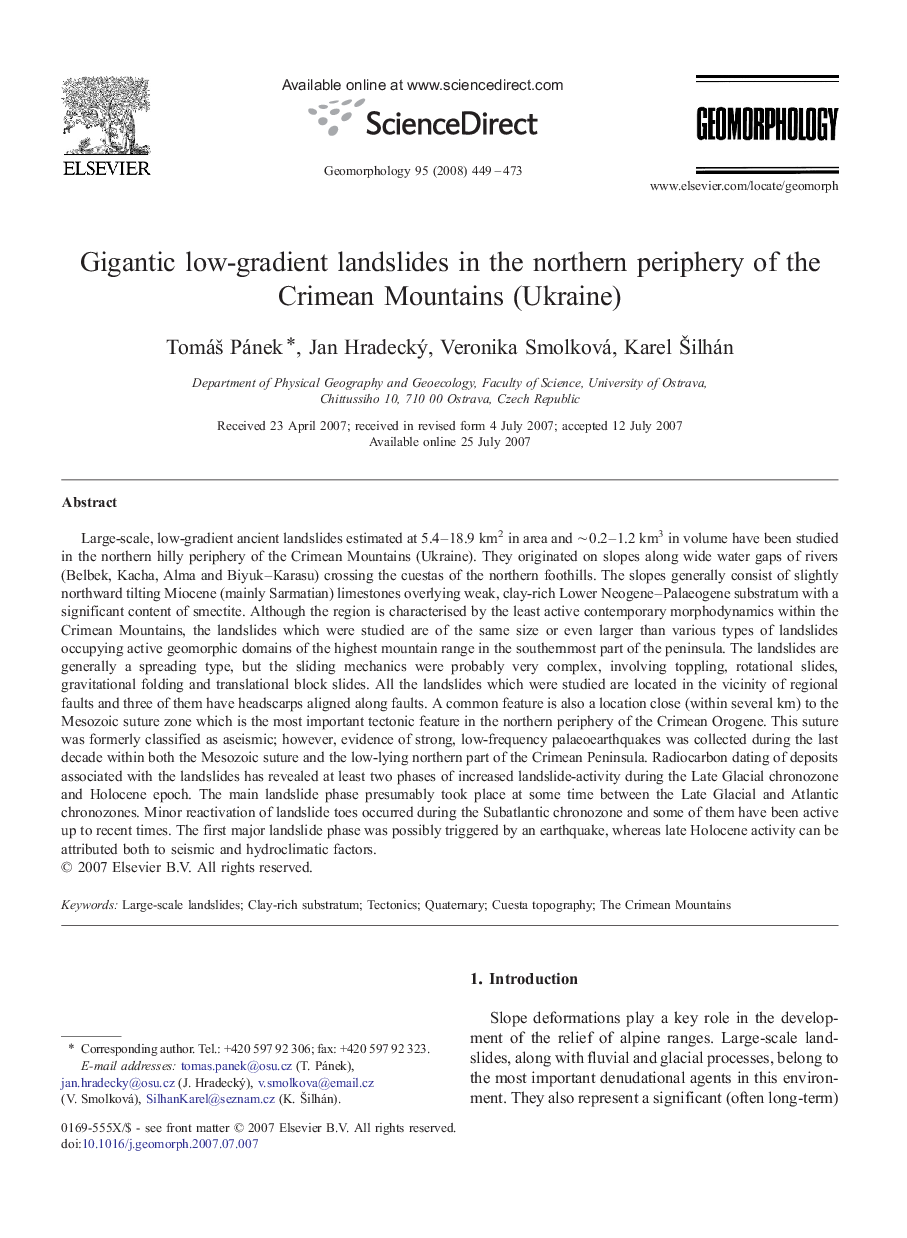| کد مقاله | کد نشریه | سال انتشار | مقاله انگلیسی | نسخه تمام متن |
|---|---|---|---|---|
| 4686877 | 1635562 | 2008 | 25 صفحه PDF | دانلود رایگان |

Large-scale, low-gradient ancient landslides estimated at 5.4–18.9 km2 in area and ∼ 0.2–1.2 km3 in volume have been studied in the northern hilly periphery of the Crimean Mountains (Ukraine). They originated on slopes along wide water gaps of rivers (Belbek, Kacha, Alma and Biyuk–Karasu) crossing the cuestas of the northern foothills. The slopes generally consist of slightly northward tilting Miocene (mainly Sarmatian) limestones overlying weak, clay-rich Lower Neogene–Palaeogene substratum with a significant content of smectite. Although the region is characterised by the least active contemporary morphodynamics within the Crimean Mountains, the landslides which were studied are of the same size or even larger than various types of landslides occupying active geomorphic domains of the highest mountain range in the southernmost part of the peninsula. The landslides are generally a spreading type, but the sliding mechanics were probably very complex, involving toppling, rotational slides, gravitational folding and translational block slides. All the landslides which were studied are located in the vicinity of regional faults and three of them have headscarps aligned along faults. A common feature is also a location close (within several km) to the Mesozoic suture zone which is the most important tectonic feature in the northern periphery of the Crimean Orogene. This suture was formerly classified as aseismic; however, evidence of strong, low-frequency palaeoearthquakes was collected during the last decade within both the Mesozoic suture and the low-lying northern part of the Crimean Peninsula. Radiocarbon dating of deposits associated with the landslides has revealed at least two phases of increased landslide-activity during the Late Glacial chronozone and Holocene epoch. The main landslide phase presumably took place at some time between the Late Glacial and Atlantic chronozones. Minor reactivation of landslide toes occurred during the Subatlantic chronozone and some of them have been active up to recent times. The first major landslide phase was possibly triggered by an earthquake, whereas late Holocene activity can be attributed both to seismic and hydroclimatic factors.
Journal: Geomorphology - Volume 95, Issues 3–4, 15 March 2008, Pages 449–473